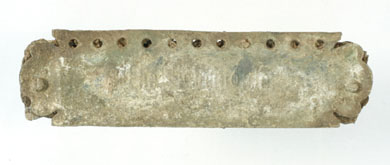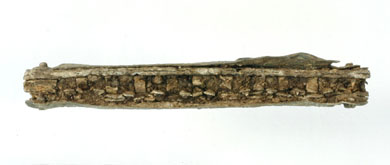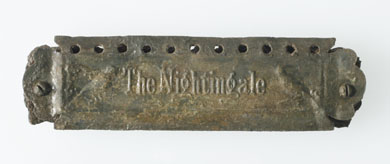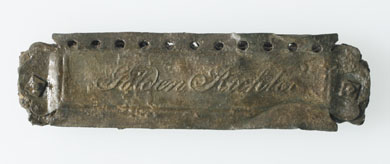Artifact Conservation |
 |
 |
 |
 |
A complete harmonica was recovered from the Williams farmstead. These images show the artifact before (top row) and after (bottom row) conservation at the Conservation Research Laboratory at Texas A&M University. The specimen is composed of stamped brass cover plates and interior reed plates, separated by wooden layers and held together with iron screws and nuts. |
In conjunction with the Williams Farmstead Archeological project, some of the most important artifacts were sent to the Conservation Research Laboratory, which is operated through Texas A&M University’s Nautical Archaeology Program. While they specialize in conserving artifacts from shipwrecks and other underwater sites, they also provide commercial services to conserve, stabilize, or restore artifacts from other types of sites. The conservation process varies depending on the type of materials in each object, but the intent is to halt deterioration and stabilize items to prevent their destruction. The most vulnerable artifacts from historic sites on land are those made of iron and combination metals that may continue to corrode over time. Once iron artifacts begin to rust, for example, the natural chemical processes that breakdown iron to iron oxide will continue unless something is done to stop it. But if artifacts are properly conserved, the items are completely stabilized for long-term curation and are suitable for museum displays. Many of the artifacts from the Ransom Williams farmstead were severely corroded from being buried in the ground and subjected to natural elements, specifically, repeated wetting and drying. A sample of those materials, including some of the most significant items in advanced stages of deterioration, were processed by the Conservation Research Laboratory in 2013 and 2014. |